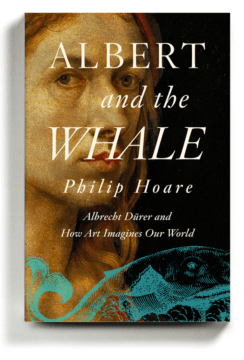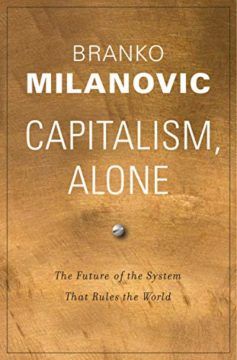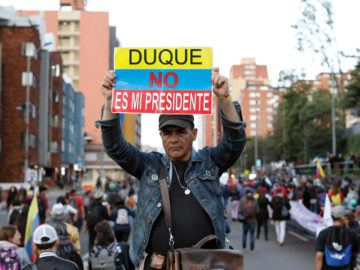Category: Recommended Reading
Clive Bell and the Making of Modernism
Kathryn Hughes at The Guardian:
 Bell performed his project of, to use Hussey’s subtitle, “making modernism” chiefly through the championing of “modern art”. By this he meant painting that eschewed anecdote, nostalgia or moral messaging in favour of lines and colours combined to stir the aesthetic sense. For ease of reference, he called the thing he was after “significant form”. While sensible Britain saw cubism, together with post-impressionism, as incoherent and formless to the point of lunacy, Bell followed the example of the older and more expert critic Roger Fry in reframing these movements as heroic attempts to purge the plastic arts of any lingering attachment to representational fidelity. His great touchstones were French (he called Paul Cézanne “the great Christopher Columbus of a new continent of form”) but admitted that occasionally you found an English painter who was making the right shapes – Vanessa Bell, say, or Duncan Grant. The fact that Vanessa was his wife and Duncan her lover detracted only slightly from his pronouncements.
Bell performed his project of, to use Hussey’s subtitle, “making modernism” chiefly through the championing of “modern art”. By this he meant painting that eschewed anecdote, nostalgia or moral messaging in favour of lines and colours combined to stir the aesthetic sense. For ease of reference, he called the thing he was after “significant form”. While sensible Britain saw cubism, together with post-impressionism, as incoherent and formless to the point of lunacy, Bell followed the example of the older and more expert critic Roger Fry in reframing these movements as heroic attempts to purge the plastic arts of any lingering attachment to representational fidelity. His great touchstones were French (he called Paul Cézanne “the great Christopher Columbus of a new continent of form”) but admitted that occasionally you found an English painter who was making the right shapes – Vanessa Bell, say, or Duncan Grant. The fact that Vanessa was his wife and Duncan her lover detracted only slightly from his pronouncements.
more here.
A Wide-Roaming Meditation on Dürer and His Art
John Williams at the NYT:
 As a titan of the Renaissance, Dürer needs no puffing up, but Hoare doesn’t stint on the claims: “No one painted dirt before Dürer,” is a particularly arresting example. He created “the first self-portrait of an artist painted for its own sake.” In a later self-portrait, he is “where the modern world begins. That stare, that self, that star.” He became “the first genuinely international artist,” and his engraving “Melencolia I” is “the most analyzed object in the history of art,” a great cipher of a piece that at less than 10 by 8 inches created “a new existential state.”
As a titan of the Renaissance, Dürer needs no puffing up, but Hoare doesn’t stint on the claims: “No one painted dirt before Dürer,” is a particularly arresting example. He created “the first self-portrait of an artist painted for its own sake.” In a later self-portrait, he is “where the modern world begins. That stare, that self, that star.” He became “the first genuinely international artist,” and his engraving “Melencolia I” is “the most analyzed object in the history of art,” a great cipher of a piece that at less than 10 by 8 inches created “a new existential state.”
The breadth of the artist’s work made room for the most granular natural detail and the most hallucinatory fantasy. He was working at a time when reality was asserting itself in new ways, not long before Copernicus and Galileo astonished but also disillusioned us.
more here.
How Adult Children Affect Their Mother’s Happiness
Arthur C. Brooks in The Atlantic:
 “You are … irritating and unbearable, and I consider it most difficult to live with you.” So wrote Johanna Schopenhauer in a 1807 letter to her 19-year-old son Arthur. “No one can tolerate being reproved by you, who also still show so many weaknesses yourself, least of all in your adverse manner, which in oracular tones, proclaims this is so and so, without ever supposing an objection. If you were less like you, you would only be ridiculous, but thus as you are, you are highly annoying.”
“You are … irritating and unbearable, and I consider it most difficult to live with you.” So wrote Johanna Schopenhauer in a 1807 letter to her 19-year-old son Arthur. “No one can tolerate being reproved by you, who also still show so many weaknesses yourself, least of all in your adverse manner, which in oracular tones, proclaims this is so and so, without ever supposing an objection. If you were less like you, you would only be ridiculous, but thus as you are, you are highly annoying.”
The two-century-old letter amazes not just for its mix of archaic diction and sick burns, but also because it violates some of humanity’s most basic assumptions about how mothers feel about their children. Motherhood is supposed to bring unparalleled happiness. The Bible, for example, is full of stories of women—Sarah, Hannah, Elizabeth—who go from sorrow to joy when God grants them an unexpected child. In real life, the relationship between happiness and motherhood is more complicated. Raising small children is far from unmitigated bliss. Year after year, surveys that ask mothers what they most want for Mother’s Day find that their No. 1 answer is time alone. As children grow up, mothers’ mixed feelings seem to stick around. Research suggests that plenty of mothers, while perhaps not as up-front as Johanna, feel some resentment toward their adult progeny, especially when the relationship feels unequal. Thankfully, social science also offers clues to how adult children can patch things up and make their moms happier.
…Arthur Schopenhauer grew up to become one of the greatest thinkers of the 19th century, but he never figured out how to make his mom happy. “The door that you slammed so loudly yesterday, after you had conducted yourself extremely improperly toward your mother, closed forever between you and me,” Johanna wrote to him after an especially bad argument in 1813. By all accounts they never saw each other again.
More here.
The Women of NPR, When NPR Was a Start-Up
Zoe Greenberg in The New York Times:
 When Nina Totenberg was a young reporter hustling for bylines in the 1960s, she pitched a story about how college women were procuring the birth control pill. “Nina, are you a virgin?” her male editor responded. “I can’t let you do this.” Such were the obstacles that Totenberg and the women journalists of her generation faced, largely relegated to the frivolous “women’s pages” and denied the chance to cover so-called hard news. But as Lisa Napoli’s “Susan, Linda, Nina & Cokie” chronicles, just as some women journalists were suing Newsweek and The New York Times over gender discrimination, in the 1970s, an upstart nonprofit called National Public Radio arrived on the scene offering new opportunities.
When Nina Totenberg was a young reporter hustling for bylines in the 1960s, she pitched a story about how college women were procuring the birth control pill. “Nina, are you a virgin?” her male editor responded. “I can’t let you do this.” Such were the obstacles that Totenberg and the women journalists of her generation faced, largely relegated to the frivolous “women’s pages” and denied the chance to cover so-called hard news. But as Lisa Napoli’s “Susan, Linda, Nina & Cokie” chronicles, just as some women journalists were suing Newsweek and The New York Times over gender discrimination, in the 1970s, an upstart nonprofit called National Public Radio arrived on the scene offering new opportunities.
NPR, unlike its well-resourced competitors, was eager to hire sharp, inventive, low-wage workers who couldn’t find jobs anywhere else — in other words, women. That decision launched the star-bright careers of Napoli’s subjects: Susan Stamberg, Linda Wertheimer, Totenberg and Cokie Roberts, and they in turn helped transform NPR from “the nation’s largest unlicensed Montessori school,” as an early study described it, to the vaunted institution it is today. (Finally allowed to do the stories she wanted, Totenberg became an iconic Supreme Court reporter.) Napoli, herself a reporter for print and radio who has written three other books, illuminates the terrifying, thrilling energy of NPR as start-up: “Not a day would go by without a tape reel being hurled like a Frisbee into the control room at the last minute, or breaking during playback, and it was never quite clear who’d show up for work or whether there’d be enough stories to fill the time.”
The book is a lesson in how the fringe project of one generation becomes the mainstream of the next.
More here.
Saturday Poem
Service Economy Fantastique
After the
lights are ….. turned off at the
………………………………. restaurant
………… the grillcook and dishwasher
………… wait for the floor they have
………… mopped to dry in the dark to the
………… humid ministrations of eight ceiling
………… fans and two stereo speakers
………… pulsing like the throat of
………… Marvin Gaye calling
……………… GT-UP GET-UP GET-UP GET-UP
as
they wait
in dining room darkness,
dancing in place before the Nero
neon of the clock on the wall, … as the … windows
…………………………………………………… …….blush
by Michael Veve
from El Coro
University of Massachusetts Press, 1997
Friday, May 7, 2021
The Hume paradox: how great philosophy leads to dismal politics
Julian Baggini in Prospect:
 How did one of the greatest philosophers who ever lived get so much wrong? David Hume certainly deserves his place in the philosophers’ pantheon, but when it comes to politics, he erred time and again. The 18th-century giant of the Scottish Enlightenment was sceptical of democracy and—despite his reputation as “the great infidel”—in favour of an established church. He was iffy on the equality of women and notoriously racist. He took part in a pointless military raid on France without publicly questioning its legitimacy.
How did one of the greatest philosophers who ever lived get so much wrong? David Hume certainly deserves his place in the philosophers’ pantheon, but when it comes to politics, he erred time and again. The 18th-century giant of the Scottish Enlightenment was sceptical of democracy and—despite his reputation as “the great infidel”—in favour of an established church. He was iffy on the equality of women and notoriously racist. He took part in a pointless military raid on France without publicly questioning its legitimacy.
In unravelling the Hume paradox, what we find is that the very qualities that made Hume such a brilliant philosopher also made him a flawed political thinker. There are implications here for contemporary academic philosophy—whose much-vaunted “transferable critical skills” turn out not to transfer so well after all. Styles of thinking that work brilliantly in some domains fail miserably in others: indeed, some of our biggest mistakes arise when we transfer a way of thinking apt for one domain to another where it just doesn’t fit. There are consequences, too, for day-to-day and working life: Hume shows that the smartest person in the room isn’t necessarily the smartest choice for the job. And then there are general implications for the way in which a healthy intellectual scepticism, the essential precondition for rational enquiry in science and much else, can easily become a fatalistic cynicism about the prospects for building a better society.
More here.
The weird science of the placebo effect keeps getting more interesting
Brian Resnick in Vox:
 The story of the placebo effect used to be simple: When people don’t know they are taking sugar pills or think they might be a real treatment, the pills can work. It’s a foundational idea in medicine and in clinical drug trials dating back to the 1950s.
The story of the placebo effect used to be simple: When people don’t know they are taking sugar pills or think they might be a real treatment, the pills can work. It’s a foundational idea in medicine and in clinical drug trials dating back to the 1950s.
Then Ted Kaptchuk came along.
Kaptchuk is a professor at Harvard Medical School, and over the past decade, he and colleagues have shown, in study after study, that giving people placebos openly — that is, telling them they are taking a placebo — helps them feel better. Specifically, they found a placebo can relieve not just pain but also anxiety and fatigue.
In February, Kaptchuk and his colleagues published the results of a clinical trial comparing these open-label placebos to double-blind placebos (the gold standard in medical research) in treating irritable bowel syndrome. Both were equally effective.
More here.
Can capitalism be fixed?
Alyssa Battistoni in The Nation:
 The economist Branko Milanovic has been a central participant in the debates of this emerging field, as well as one of its most idiosyncratic contributors. Born in Belgrade when it was part of Yugoslavia, Milanovic wrote his dissertation on income inequality in his home country long before it was a fashionable topic. He went on to research income inequality as an economist at the World Bank for nearly two decades before taking up a string of academic appointments; he currently teaches at the Graduate Center of the City University of New York. But he is not your typical World Bank economist: Milanovic knows his Marx and, though not a Marxist himself, has long insisted on the value of class analysis and historical perspectives to economics, while also dabbling in political-philosophy debates about distributive justice. His experience of life under actually existing socialism, meanwhile, gave him critical distance from the end-of-history narratives that were trumpeted in much of the West after the fall of the USSR—as well as from the end-of-the-end-of-history hand-wringing that has proliferated since 2016. The discourse, then, seems to be catching up to where Milanovic has been all along.
The economist Branko Milanovic has been a central participant in the debates of this emerging field, as well as one of its most idiosyncratic contributors. Born in Belgrade when it was part of Yugoslavia, Milanovic wrote his dissertation on income inequality in his home country long before it was a fashionable topic. He went on to research income inequality as an economist at the World Bank for nearly two decades before taking up a string of academic appointments; he currently teaches at the Graduate Center of the City University of New York. But he is not your typical World Bank economist: Milanovic knows his Marx and, though not a Marxist himself, has long insisted on the value of class analysis and historical perspectives to economics, while also dabbling in political-philosophy debates about distributive justice. His experience of life under actually existing socialism, meanwhile, gave him critical distance from the end-of-history narratives that were trumpeted in much of the West after the fall of the USSR—as well as from the end-of-the-end-of-history hand-wringing that has proliferated since 2016. The discourse, then, seems to be catching up to where Milanovic has been all along.
More here.
“Trains & Tempos”: A Timelapse Film by Michael Tretner
[Thanks to Rafaël Newman.]
Crush
Larissa Pham at The Believer:
 To apply Claude Lévi-Strauss’s structural anthropology, a crush is called a crush because it crushes you. A crush is distinct from friendship or love by dint of its intensity and sudden onset. It is marked by passionate feeling, by constant daydreaming: a crush exists in the dreamy space between fantasy and regular life. The objects of our crushes, who themselves may also be referred to as crushes, cannot be figures central to our daily lives. They appear on the periphery of our days, made romantic by their distance.
To apply Claude Lévi-Strauss’s structural anthropology, a crush is called a crush because it crushes you. A crush is distinct from friendship or love by dint of its intensity and sudden onset. It is marked by passionate feeling, by constant daydreaming: a crush exists in the dreamy space between fantasy and regular life. The objects of our crushes, who themselves may also be referred to as crushes, cannot be figures central to our daily lives. They appear on the periphery of our days, made romantic by their distance.
Crush can act as both a noun and a verb: “You are my crush”; “I am crushing on you.”
Crush can be both subject and object: “You are my crush”; “I have a crush on you.”
According to my Google searches, the first recorded instance of the use of crush in a romantic sense, to mean a person one is infatuated with, is from 1884, in the diary of Isabella Maud Rittenhouse. As in: “Wintie is weeping because her crush is gone.” By 1913, it had entered usage as a verb.
more here.
Roxane Gay, Larissa Pham, and Kim Fu present Kink
The Travels of a Master Storyteller
Yasmine Seale at The Paris Review:
 Aladdin, readers are sometimes surprised to learn, is a boy from China. Yet the text is ambivalent about what this means, and pokes gentle fun at the idea of cultural authenticity. Scheherazade has hardly begun her tale when she forgets quite where it is set. “Majesty, in the capital of one of China’s vast and wealthy kingdoms, whose name escapes me at present, there lived a tailor named Mustafa.” The story’s institutions are Ottoman, the customs half-invented, the palace redolent of Versailles. It is a mishmash and knows it.
Aladdin, readers are sometimes surprised to learn, is a boy from China. Yet the text is ambivalent about what this means, and pokes gentle fun at the idea of cultural authenticity. Scheherazade has hardly begun her tale when she forgets quite where it is set. “Majesty, in the capital of one of China’s vast and wealthy kingdoms, whose name escapes me at present, there lived a tailor named Mustafa.” The story’s institutions are Ottoman, the customs half-invented, the palace redolent of Versailles. It is a mishmash and knows it.
Like Aladdin, like Aleppo, Diyab’s is a story of mixture. He knows French, Turkish, Italian, even Provençal—but not Greek: in Cyprus, unable to understand the language, he feels like “a deaf man in a wedding procession.” Slipping in and out of personae, he is alert to the masquerades of others.
more here.
Friday Poem
Language Current
English is like a nuclear reactor.
I’m in it right now.
As I shoot down it’s fast track
small bits of skin, fragments, cells
stick to my sides.
Once in a while whole sentences gush forth
and slam themselves against the page
condensing their spray of pellets
into separate words.
Sometimes I travel at 186,000 miles an hour,
the speed of light,
when I lie sleepless on the bed at night.
No excess baggage allowed.
No playful, baroque tendrils
curling this way and that.
No dreamtime walkabout
all the way down to Australia.
In English you have to know where you’re going:
either towards the splitting of the self
or the blasting of the molecules around you.
Spanish is a different tongue.
It’s deeper and darker, with so many twists
and turns it makes me feel like I’m navigating
the uterus. Shards of gleaming stone,
emerald, amethyst, opal
wink at me as I swim down the moist shaft.
It goes deeper than the English Channel,
al the way down to the birth canal and beyond.
by Rosario Ferré
from El Coro
University of Massachusetts Press, 1997
What We Find When We Get Lost in Proust
Adam Gopnik in The New Yorker:
 When the first volume of “In Search of Lost Time” appeared, a year before the Great War, the shock of its excellence was captured in a delicious exchange with André Gide, the magus of the Parisian literary scene. Apologizing for having passed on “Swann’s Way” for his Nouvelle Revue Française, Gide offered an explanation almost more insulting than the original rejection: “For me you were still the man who frequented the houses of Mmes X. and Z., the man who wrote for the Figaro. I thought of you, shall I confess it, as ‘du côté de chez Verdurin’; a snob, a man of the world, and a dilettante—the worst possible thing for our review.” Proust, who had money, had offered to help subsidize the publication, which, Gide fumbles to explain, only made it seem a dubious effort at buying a reputation. (That year, Gide confided in his journal his doubts that any Jewish writer could truly master the “virtues” of the French tradition.)
When the first volume of “In Search of Lost Time” appeared, a year before the Great War, the shock of its excellence was captured in a delicious exchange with André Gide, the magus of the Parisian literary scene. Apologizing for having passed on “Swann’s Way” for his Nouvelle Revue Française, Gide offered an explanation almost more insulting than the original rejection: “For me you were still the man who frequented the houses of Mmes X. and Z., the man who wrote for the Figaro. I thought of you, shall I confess it, as ‘du côté de chez Verdurin’; a snob, a man of the world, and a dilettante—the worst possible thing for our review.” Proust, who had money, had offered to help subsidize the publication, which, Gide fumbles to explain, only made it seem a dubious effort at buying a reputation. (That year, Gide confided in his journal his doubts that any Jewish writer could truly master the “virtues” of the French tradition.)
Proust responded with the most beautiful fuck-you letter in literary history, suavely pretending that Gide’s belatedly flattering letter made up for all the previous insults: “Had there been no rejection, no repeated rejections by the N.R.F., I should never have had your letter. . . . The joy of receiving your letter infinitely surpasses any I should have had at being published by the N.R.F. . . . How I should like to be able to give someone I loved as much pleasure as you have given me.” Gide, no fool, made a firm offer to publish the rest of the novel, which the Nouvelle Revue did, right through to its completion.
The exchange underlines several aspects of Proust as a phenomenon. First, Proust landed on his contemporaries with something of the same revelatory shock that he delivers to us. Perhaps only the abrupt celebrity of Karl Ove Knausgaard has had the same effect in our time. What made the metamorphosis? The unimaginably large space between the Proust of “The Mysterious Correspondent” and the Proust of “Swann’s Way” lies in his learning to trust the meandering nature of his own intelligence. He found a voice by hearing his own. The one thing that Proust’s mature literary manner is not is mannered. It was as natural and unimpeded as Mark Twain’s. His mind moved exactly as his sentences do, and his gift was to be able to trace its movements without being halted by other people’s literary rules.
More here.
Could mitochondria help athletes to make gains?
Anthony King in Nature:
 Usain Bolt won the men’s 100 metre final in the 2016 Olympic Games in 9.81 seconds and 42 strides. A few days later, Eliud Kipchoge ran 42 kilometres in 2 hours and 8 minutes to win the marathon. These extraordinary feats pose very different challenges for the human body, but the races began in much the same way. As the starting pistol fired, Bolt and Kipchoge began to use creatine phosphate, an energy-rich molecule stored in muscle tissue, to generate the energy-carrying molecule ATP. In a few seconds, however, both athletes’ stores of creatine phosphate were depleted, forcing their bodies to break down glucose to provide ATP to contracting muscle cells for a few more minutes. For Bolt and his fellow sprinters, a few minutes seems like an age. But for marathon runners, there is much farther to go. To reach the finish line, these endurance athletes rely on a slower, but more efficient way to generate ATP that uses oxygen to burn fats and carbohydrates, in structures inside the cell called mitochondria.
Usain Bolt won the men’s 100 metre final in the 2016 Olympic Games in 9.81 seconds and 42 strides. A few days later, Eliud Kipchoge ran 42 kilometres in 2 hours and 8 minutes to win the marathon. These extraordinary feats pose very different challenges for the human body, but the races began in much the same way. As the starting pistol fired, Bolt and Kipchoge began to use creatine phosphate, an energy-rich molecule stored in muscle tissue, to generate the energy-carrying molecule ATP. In a few seconds, however, both athletes’ stores of creatine phosphate were depleted, forcing their bodies to break down glucose to provide ATP to contracting muscle cells for a few more minutes. For Bolt and his fellow sprinters, a few minutes seems like an age. But for marathon runners, there is much farther to go. To reach the finish line, these endurance athletes rely on a slower, but more efficient way to generate ATP that uses oxygen to burn fats and carbohydrates, in structures inside the cell called mitochondria.
Elite endurance athletes such as Kipchoge pack many more of these aerobic power plants into muscle cells than both an average person and the far-from-average Usain Bolt. “He probably doesn’t need any more mitochondria than you or I,” says John Hawley, an exercise physiologist at the Australian Catholic University in Melbourne. Athletes’ mitochondrial engines activate quickly, within a few minutes of exercise, but even for the best, that switch doesn’t flick immediately. “We can’t turn on mitochondria fast enough to provide all the energy required for a sprint,” says David Hood, a mitochondrial scientist at York University in Toronto, Canada.
More here.
Thursday, May 6, 2021
Arthur Jafa’s Swing
Morgan Meis in The Easel:
 Early in 2016, not long after the inauguration of Donald Trump as President of the United States, an artist named Arthur Jafa screened a work of video art at Gavin Brown’s Enterprise in New York City. The video was titled Love is the message, the message is death. It is about seven minutes long. It is constructed of found footage ranging in time from the immediate present to shaky clips from the early days of film. Most of the clips are just a couple of seconds long. Generally, they feature Black people, African Americans in specific. Much of the footage is upsetting. That’s to say, there are clips of police brutality against Black people. These clips are interspersed with other images not obviously related to the specific issue of police mistreatment of African Americans. The entire video is set to the music of Kanye West’s gospel-ish song Ultralight Beam.
Early in 2016, not long after the inauguration of Donald Trump as President of the United States, an artist named Arthur Jafa screened a work of video art at Gavin Brown’s Enterprise in New York City. The video was titled Love is the message, the message is death. It is about seven minutes long. It is constructed of found footage ranging in time from the immediate present to shaky clips from the early days of film. Most of the clips are just a couple of seconds long. Generally, they feature Black people, African Americans in specific. Much of the footage is upsetting. That’s to say, there are clips of police brutality against Black people. These clips are interspersed with other images not obviously related to the specific issue of police mistreatment of African Americans. The entire video is set to the music of Kanye West’s gospel-ish song Ultralight Beam.
The video piece was extremely popular, and Gavin Brown’s Enterprise noted that the gallery was especially busy during the run of the show. Many of the viewers of Love is the message spoke about its direct, emotional impact. Basically, it made people cry. That fact alone is worth noting. It is not often that one goes to a gallery of contemporary art and feels so emotionally impacted that the tears flow. Indeed, so many people cried watching Love is the message that the artwork started to become something of a global phenomenon. Museums and galleries all around the world wanted a piece of it. Interviewers and journalists wanted a piece of Arthur Jafa.
More here.
Percolation theory illuminates the behavior of many kinds of networks
Kelsey Houston-Edwards in Scientific American:
 When you hit “send” on a text message, it is easy to imagine that the note will travel directly from your phone to your friend’s. In fact, it typically goes on a long journey through a cellular network or the Internet, both of which rely on centralized infrastructure that can be damaged by natural disasters or shut down by repressive governments. For fear of state surveillance or interference, tech-savvy protesters in Hong Kong avoided the Internet by using software such as FireChat and Bridgefy to send messages directly between nearby phones.
When you hit “send” on a text message, it is easy to imagine that the note will travel directly from your phone to your friend’s. In fact, it typically goes on a long journey through a cellular network or the Internet, both of which rely on centralized infrastructure that can be damaged by natural disasters or shut down by repressive governments. For fear of state surveillance or interference, tech-savvy protesters in Hong Kong avoided the Internet by using software such as FireChat and Bridgefy to send messages directly between nearby phones.
These apps let a missive hop silently from one phone to the next, eventually connecting the sender to the receiver—the only users capable of viewing the message. The collections of linked phones, known as mesh networks or mobile ad hoc networks, enable a flexible and decentralized mode of communication. But for any two phones to communicate, they need to be linked via a chain of other phones. How many people scattered throughout Hong Kong need to be connected via the same mesh network before we can be confident that crosstown communication is possible?
More here.
Charlie Huenemann: Is Science Real?
On the protests in Colombia
Sergio Guzman in The Global Americans:
 The past week’s demonstrations in Colombia have shown that popular dissatisfaction is surging after a year of COVID-19 lockdowns. Although the government’s tax reform proposal may have been the immediate trigger for the unrest, pent-up anger has been building since 2019 over social inequality, unemployment, the murder of social leaders, and the conspicuous absence of the state in peripheral regions far from Bogotá. All of these problems have only been aggravated by the pandemic.
The past week’s demonstrations in Colombia have shown that popular dissatisfaction is surging after a year of COVID-19 lockdowns. Although the government’s tax reform proposal may have been the immediate trigger for the unrest, pent-up anger has been building since 2019 over social inequality, unemployment, the murder of social leaders, and the conspicuous absence of the state in peripheral regions far from Bogotá. All of these problems have only been aggravated by the pandemic.
If the proposed tax reform was the spark, police brutality was the flame that set fire to the protests. Videos shared widely on social media show security forces clubbing, tear gassing, and even killing demonstrators—over 19 people have been killed by police since April 28—in cities such as Bogotá, Cali, and Manizales. International human rights organizations, the United Nations, and foreign governments have all called on the Colombian government to de-escalate the situation, convene a dialogue, and investigate incidents of wrongdoing by police. Nevertheless, the government has refused to acknowledge the role that police brutality played in escalating the protests and continues to defend all police actions, no matter how egregious, as having been necessary to restore law and order.
More here.
